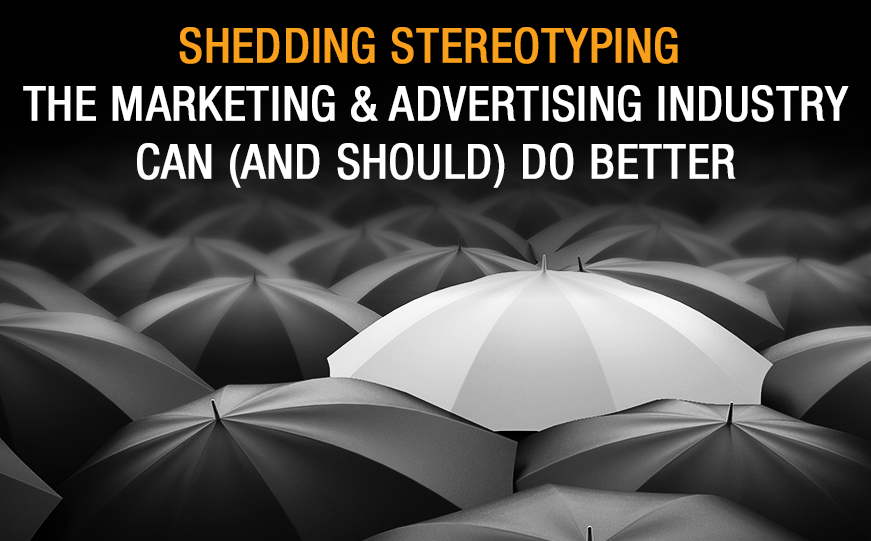Together, we’re at an inflection point in marketing and advertising. Old, tried-and-true methods and tools are being completely upended by new technologies and, especially, new ways of thinking.
This dynamic can be seen in Unilever’s recent experiment that aimed to reduce the prevalence of stereotyping amongst their internal marketing departments and their agencies. You can read about the experiment here — in summary, the goal of the experiment was to help the brand’s marketing personnel broaden their view of the world, so they would be less apt to stereotype people through advertising.
What makes the experiment interesting is that it comes at a critically important time for the advertising and marketing industry.
The Impact of Stereotyping
Throughout its existence, advertising has been based on reaching as broad an audience as possible. Budgets typically remain limited, after all, so in order to get the most bang for our bucks, marketers reasoned that they had to appeal to the most common audience denominators.
That meant developing products — and corresponding ad campaigns — that were the most crowd-pleasing as possible. Often, that pursuit has led to bland, commoditized products whose campaigns were as non-offensive as they were uninteresting.
But it also allowed the practice of stereotyping to become ingrained into the industry. Building product brands began thinking of audiences in broad, demographic terms… including age, gender, income and race. This may have seemed innocent at the time, but it led to people in our business having skewed, unhealthy worldviews that got concentrated and perpetuated over time.
At the same time, those stereotypes became less and less relevant.
To be fair, a company like Unilever makes and sells consumer packaged goods that need to appeal to massive audiences. They may have big budgets, but those dollars – much like yours — are being pulled in every direction, to maximize efficiencies.
Some of us in the building products industry may feel our missions are slightly easier. In some cases, stereotyping by profession — communicating to targeted audience personas like specifiers, contractors and builders — can be a starting point. No matter their age, gender, or ethnicity — plumbers, for example – can be argued are all united by a somewhat similar experience. Which can be a common denominator in marketing messages.
But even in those cases, and especially when courting consumer audiences, we as an industry need to do better. Employing stereotyping, even if it’s well-meaning, helps to perpetuate narrow views of people, which has effects that reach far beyond advertising.
Advertising and marketing, after all, is a big part of our culture today… so the images and messages we see in ads impacts lives far more than we may realize.
Creating Personal Connections
Using broad stereotypes to market products and services just isn’t a good idea anymore. With the technologies and platforms available to us, we can reach consumers and trade customers on a much more individual, personal level.
And that’s what people want. No one wants to be sold to anymore. People want to know the companies and brands they patronize. And they want to know that they know them.
As marketers, we can do better.
We can target smaller audiences, based on common goals, challenges, or needs. Going far deeper than traditional demographic data. That allows us to gain the trust of those consumers… who can potentially turn into advocates and influencers.
We can tell stories that have universal emotional appeal. If there’s one thing we can safely assume, it’s that all of our target customers are human beings, and are subject to emotional messages.
Finally, and most importantly, we can and should be more diverse in our depictions of our target customers. People tend to respond to ads in which they can envision themselves. For marketers, that means being more intentional about the people and situations we use in our imagery.
The use of stereotyping in advertising was a result of traditional limitations on the industry. Limited budgets. Limited channels. And a limited understanding of consumer motivations.
Budgets are still precious, but the other two limitations are gone. So there is no excuse for us to not connect with target audiences on a more personal, human level.




